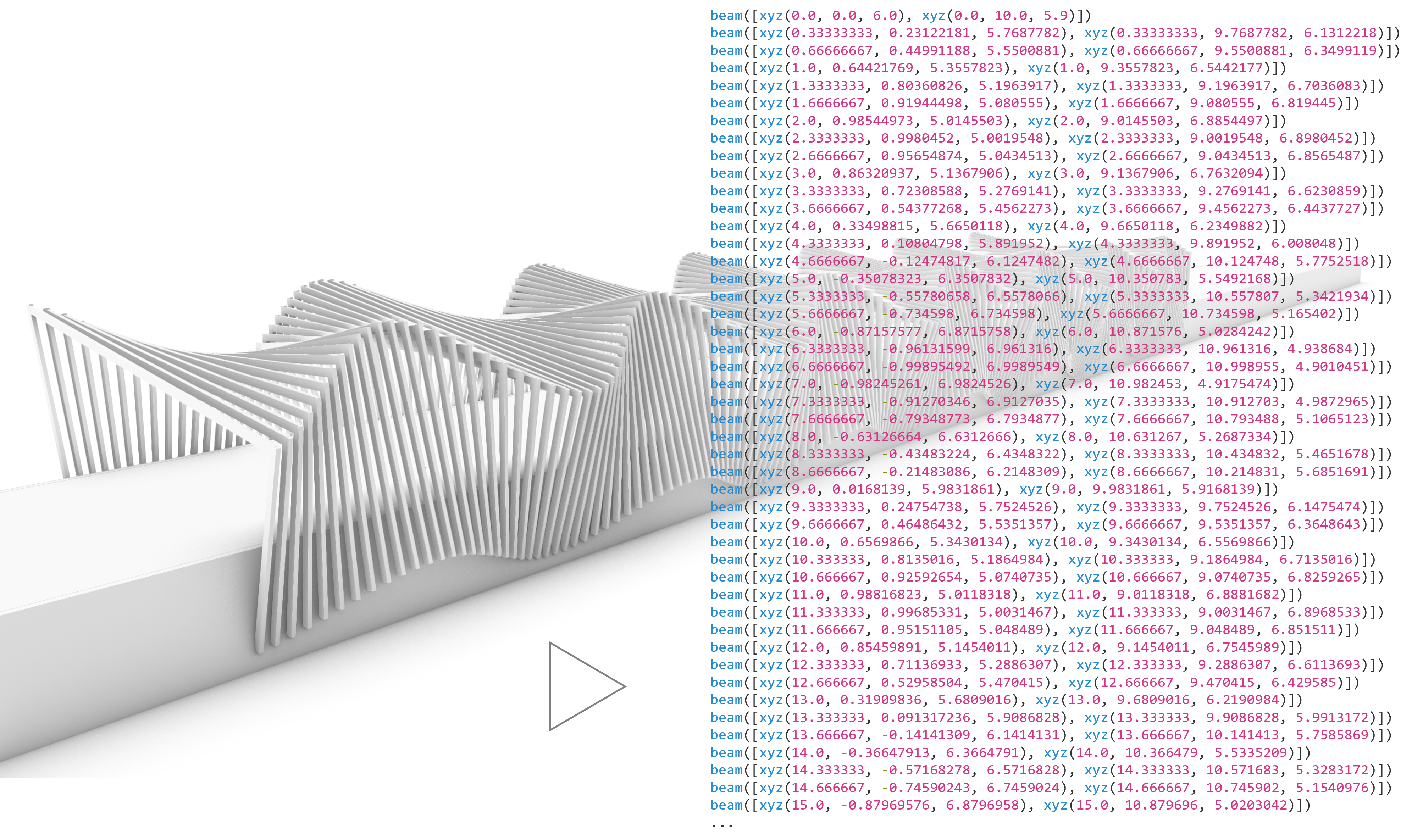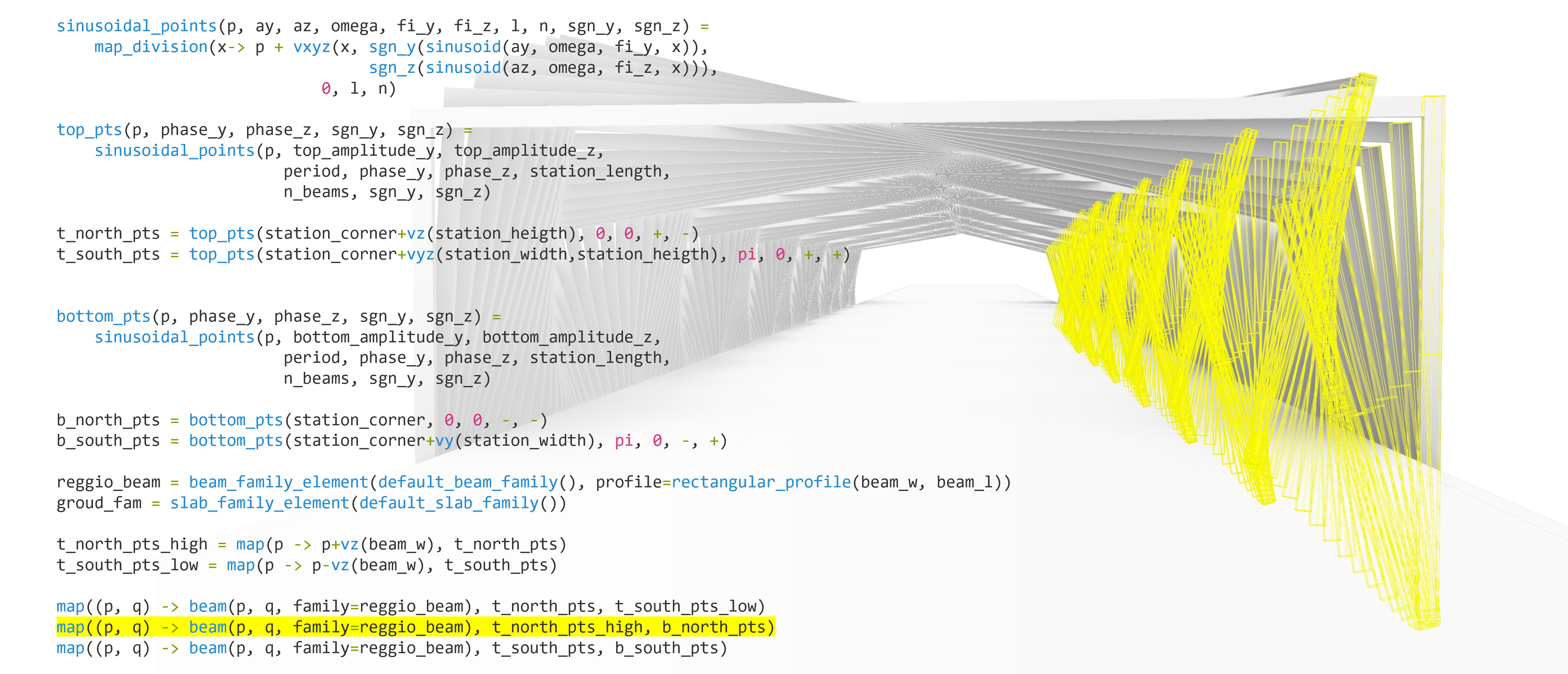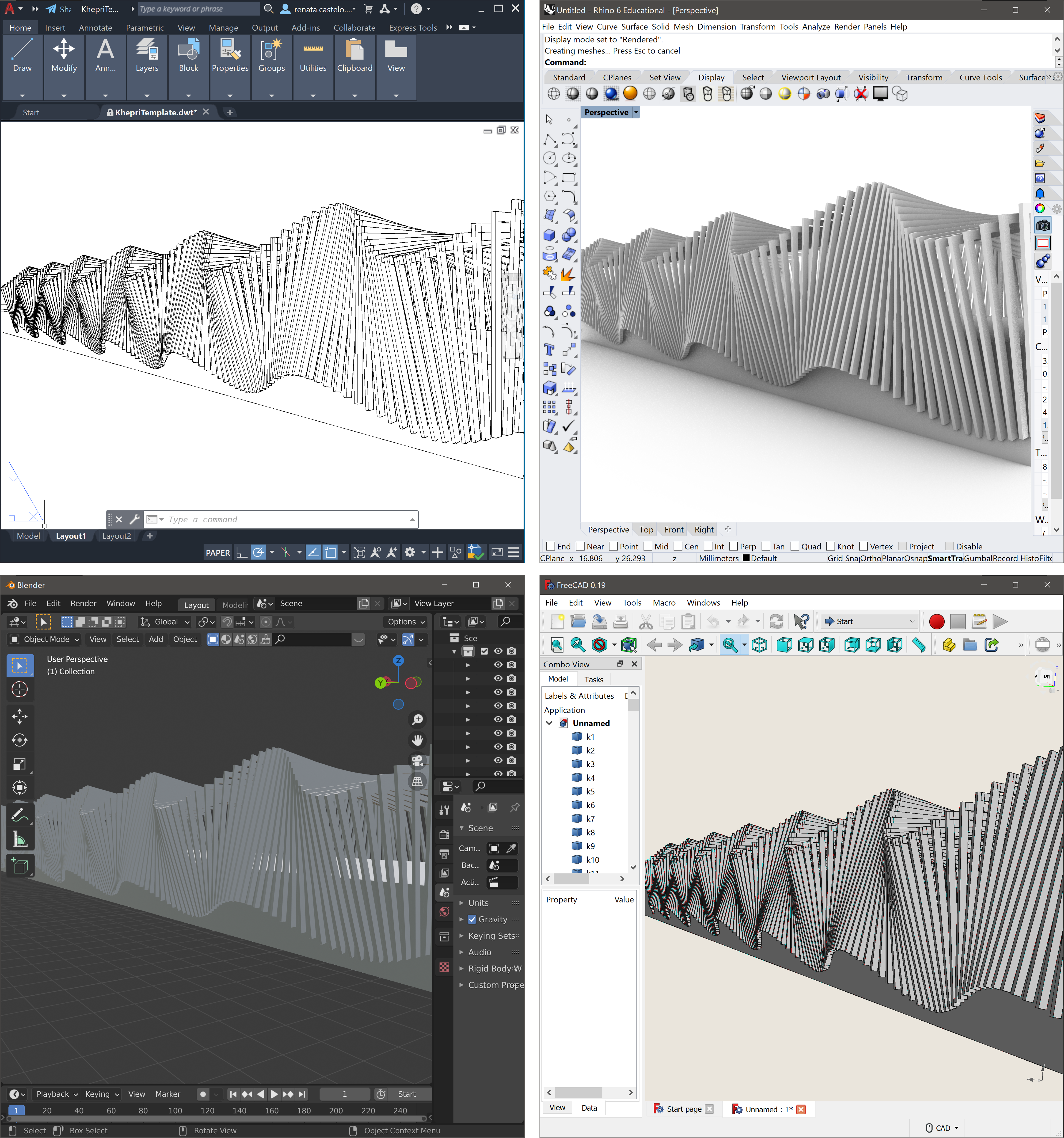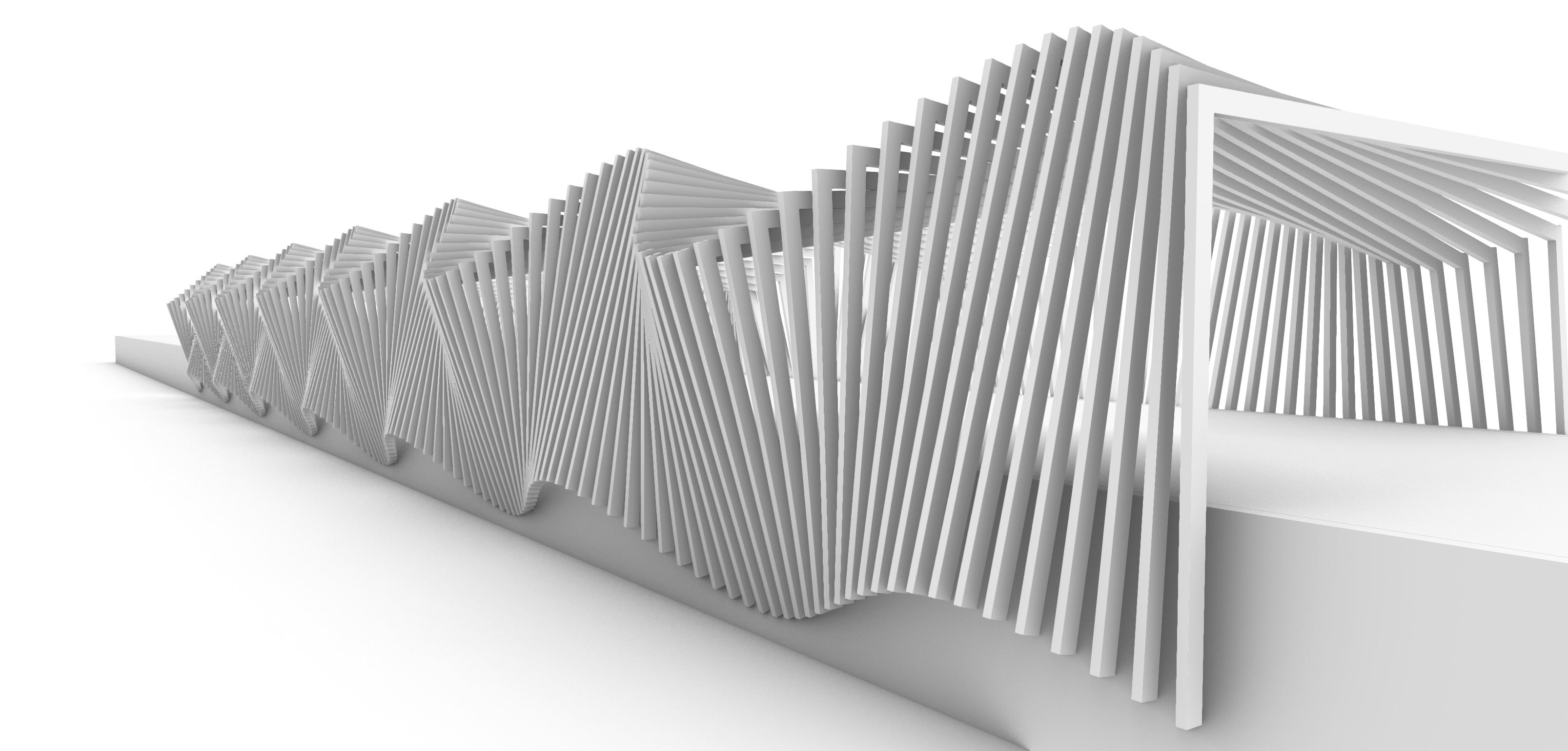Reggio Emilia Station
Original project: Santiago Calatrava
Programming Language: Julia
Algorithmic Design Tool: Khepri

Mathematics has long been used in architecture, not only for simple tasks, such as calculating lengths, areas, volumes, and material quantities, etc., but also for more complex tasks, like exploring non-conventional shapes or creating geometric patterns. To evaluate the ability of the Algorithmic Design (AD) paradigm to represent mathematical concepts, we selected an example that applies a popular mathematical curve in architectural design: the sinusoid. Throughout history, architects have devised many ways of representing these curves, including drawings (descriptive geometry), physical models (e.g., Gaudi's inverted chain model), and, more recently, digital models. For the sinusoid curve we selected Calatrava's Reggio Emilia station as a case study.
Representing the sinusoidal structure in typical digital representation methods, such as Computer-Aided Drafting (CAD) and Building Information Modeling (BIM), requires manually calculating the locations in space that define the intended shape and then using them to create the beams. Besides being extremely tiresome, this scenario is highly error-prone and not at all parametric, requiring entirely new calculations and repeating the manual creation of both the locations and beams to test different variations of the structure’s shape.

In contrast, representing the same example in the AD paradigm requires parametrically describing the mathematical curve and using it to automatically guide the creation of the beams. The curve can be represented by the function sinusoid(x) = α×sin(ω×x+φ), where sin is the sine function, α its amplitude, ω its frequency, and φ the phase. When testing different design variations, this parametric description automatically calculates new locations and generates the beams accordingly. This not only makes the whole process faster and more flexible, but also less error-prone and tedious.



